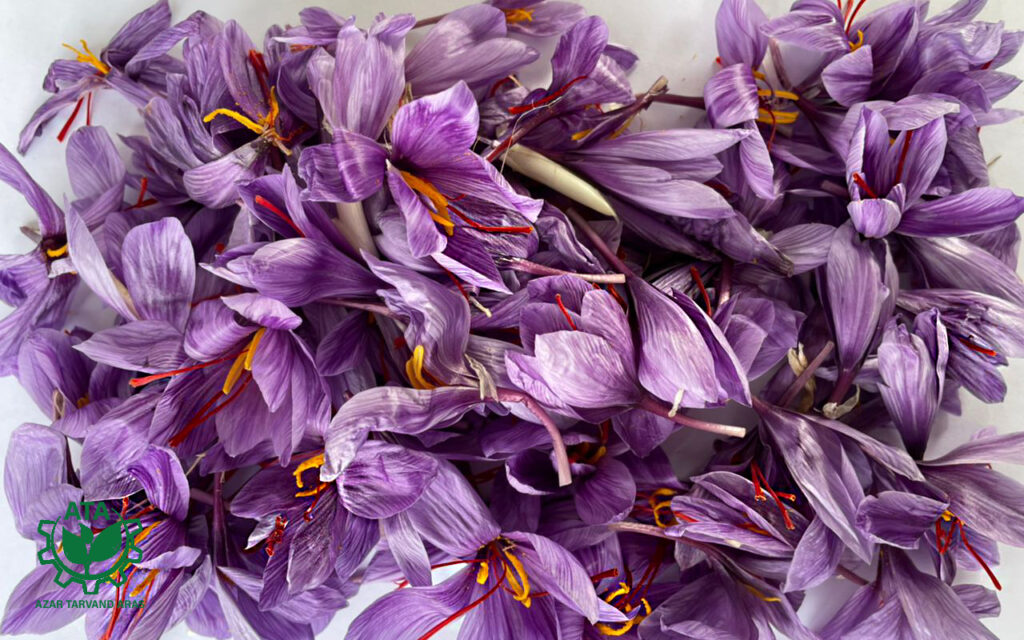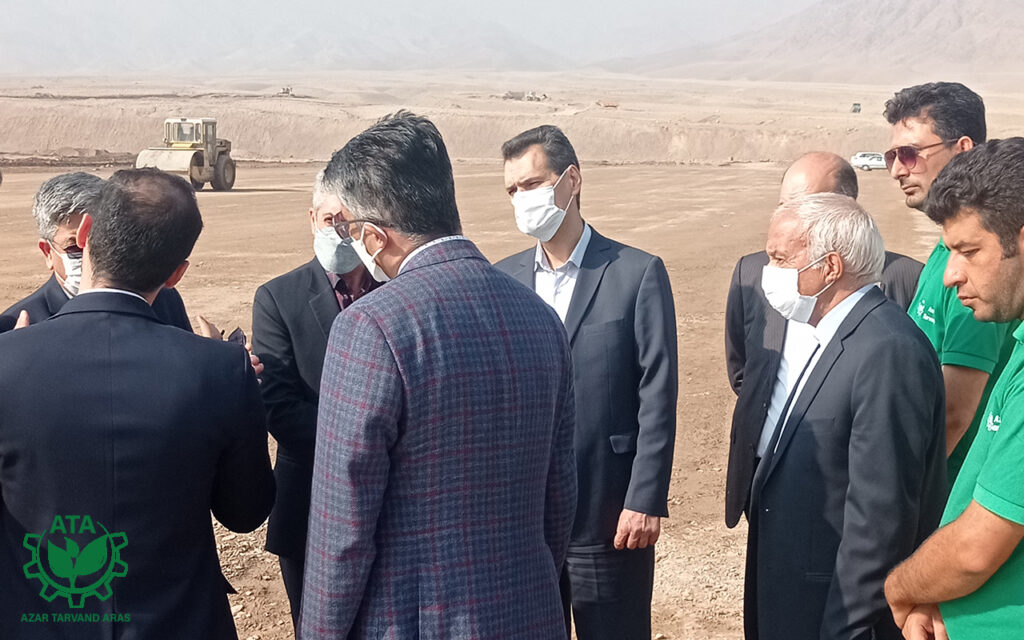Construction of different types of greenhouses:
One of the initial decisions to be made is to create the greenhouse as an isolated unit, in contact with present buildings or as a section of novel buildings. Interconnected greenhouses usually have lower construction and heating costs and easier access, but plants receive less light.
Interconnected greenhouses must be built south. An independent greenhouse can be made in a place farther away from present buildings. Plants in such a greenhouse receive sunlight from all directions. These greenhouses are so expensive due to construction and thermal systems and need extraordinary costs for water and electricity lines.
A greenhouse can be made of any size, but the smallest greenhouse which can be regarded is about 200 square feet (18.4 square meters). Smaller greenhouses are so expensive due to their construction and function.
What are issues of crop production?
The major issues of crop production in each climate are included:
- atmospheric and geographical location of the region
- cold and hot weather
- value and intensity of light
- strong winds
- snow and raining
- water resources and water quality
- soil conditions
- characteristics of the region
12 Characteristics of the greenhouse construction site:
Thus, the initial point to build a greenhouse is to select the right place, in which case the following points must be regarded:
1) Soil suitability due to the physical and chemical situations
If soil situations are not beneficial (soil texture, soil nutrients, salinity, acidity, etc.) it can be enhanced by doing corrective operations (fertilization, leaching, etc.).
2) Greenhouse expansion plan
One of the important issues in the construction of greenhouses is to offer a greenhouse plan along with its expansion plan. In this plan, in addition to the land area of the greenhouse, Forecast enough space for the enhancement of the greenhouse and the construction of buildings and service buildings needed such as workers’ buildings, warehouses, communication routes, toilets, and space for water and fuel storage is of particular importance.
Finally, it is better to add a surface as an unpredictable space to the total space. The land needed for constructing the greenhouse must be at least twice the proper area of greenhouse (area under cultivation) of the greenhouse.
On average, the area of service buildings is regarded as equal to 10% of cultivated area (13% for small greenhouses and 7.5% for large greenhouses).
Hence, in the construction of greenhouses, it is required to get a principled agreement and see the laws due to the lands of urban areas considering the construction and operation of greenhouses, because the activity of many greenhouses was stopped.
3) Topography (height and elevation) of greenhouse land
The construction site of the greenhouse must be as flat as possible because the construction of large greenhouses on uneven and sloping lands needs a lot of money leveling operations.
4) Suitable drainage system
Due to the widespread utilization of water in greenhouse operations, greenhouse soil must be light and well-drained. Thus, making a suitable drainage system is required, especially in heavily textured soils. In heavy soils, drainage operations are commonly done by placing clay pipes underground.
5) Wind direction
In windy areas, the greenhouse must not be built perpendicular to the direction of prevailing winds. The best-case scenario is that the greenhouse length is approximately along the direction of the prevailing wind in the area which has a slight deviation from it. This deviation is to inhibit wind from entering and passing via the greenhouse entrance door.
Arched greenhouses (tunnel, semi-cylindrical, quantum, and Hoffmann) with arched roofs and walls pass the wind easily and withstand wind better than angular greenhouses with vertical walls.
A windbreaker can be applied to deal with wind gusts; (A good windbreak is a wall which can be a row of trees like cypress, pine, and sycamore which encounter wind direction. Brick walls that are uniform and without pores are not proper and will even intensify the wind flow).
Of course, to inhibit shading of trees on the greenhouse, the distance between the trees and the greenhouse in the east and west must be 2.5 times the final height of trees and in the southern section is more than the height of trees (for example, if the height of a tree is 20 meters, the distance from the greenhouse to these trees is 50 meters is chosen).
6) Appropriateness of angle and intensity of sunlight
When constructing a greenhouse, paying attention to the optimal direction for using optimal light radiation is a significant element. This element is especially considerable in winter when the value of skeletal shading is higher and the light intensity is a limiting element for growth.
It must be mentioned that morning light is most proper because by irradiating this light, plants are permitted to start the process of food production earlier, and it results in maximum growth and production which plays a significant role in the quantity and quality of the product.
Thus, the greenhouse building must be made in a direction that makes the most of morning light. Generally, single-unit greenhouses are made at latitudes above 40 degrees north along east-west to be able to correctly receive winter sunlight with low radiation angles and intensities. At altitudes below 40 degrees north, the north-south direction is more suitable because the angle of sunlight is much higher.
In greenhouses that are connected lengthwise (composite tunnel greenhouses) in all latitudes, the north-south direction is more proper to decrease the amount of shading in the northern part of the greenhouse. The north-south direction causes the shadow to move across the floor of the greenhouse during the day, while this is not possible in the east-west direction. Thus, it must be mentioned that wind direction is also an identifying element in the direction of greenhouse building.
7) Proper environmental and climatic situations
The climatic situations of a region have a high effect on the production and quality and quantity of horticultural products. Areas with very cold winters, very hot summers, heavy rains, constant fog, and unfavorable situations are not proper for greenhouse construction.
The most proper area for greenhouse crops is an area with mild winters and many sunny days.
8) Access to healthy water
In the construction of commercial greenhouses, water is one of the factors whose quantity and quality are considerable in terms of widespread utilization of water.
Before constructing a greenhouse, it is better to do a test of the water used. EC or water salinity is one of the considerable elements. The lower EC (freshwater), the higher the yield of the product. Sodium, chlorine, and bicarbonate ions will decrease water quality, damage the plant, and finally decrease yields.
Applying well water is more proper because piped water may contain fluoride and chlorine (fluoride is harmful to plants) while using municipal water (piping) is expensive and increases production costs. River water is also not very proper because it may be contaminated with pathogens.
Generally, the minimum water requirement for 1000 square meters of greenhouse per day in summer (peak consumption) is 8-10 cubic meters.
9) Kind of product
The kind of product which is in the production program is efficient in selecting the location of the greenhouse. A successful greenhouse owner, based on the requirements of domestic and foreign markets and measuring the production costs of every product, should initially identify what product to produce and then based on the kind of product and its environmental requirements, a suitable place due to climatic situations for construction a greenhouse.
10) Access to labor
Fast access (permanent or seasonal) to cheap and skilled labor.
11) Access to other facilities (transportation, ways of communication, electricity, and fuel)
The greenhouse must be built where it is close to ways of communication, electricity, and other amenities, which, if applied correctly, will decrease production costs. (That is the ultimate goal of greenhouse management).
Besides, the location of the greenhouse is a considerable factor in the kind of fuel applied. Greenhouses away from gas pipes have to utilize other energy sources instead of gas, while gas is the cheapest and cleanest source of energy, and applying this cheap fuel can highly decrease production costs in producing cold season.
Thus, before constructing a greenhouse, the required arrangements should be created for the supply of water, electricity, and fuel.
12) Proximity to the sales market
so that the product is sold with lower shipping costs, higher quality, enough freshness and freshness, and as a result, at a more reasonable price.
Azar Tarvand Aras Agro-industry Company in Aras Free Zone, taking into account all conditions such as climatic conditions, physical conditions, facilities and access to other resources, has constructed modern hydroponic greenhouses and produce high quality products such as tomato, Bell pepper and … .



